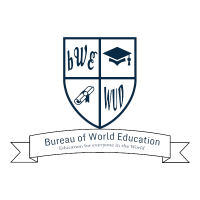
“The enrollment panorama has fully shifted and adjusted, as if an earthquake has hit the bottom,” says Heidi Aldes, dean of enrollment administration at Minneapolis School, a group school in Minnesota. She says her school’s fall 2020 enrollment was down about 8% from the earlier yr, and spring 2021 enrollment was down about 11%.
“Much less college students are getting an schooling”
Primarily based on her conversations with college students, Aldes attributes the enrollment decline to various elements, together with being on-line, the “pandemic paralysis” group members felt when COVID-19 first hit, and the monetary conditions households discovered themselves in.
“Many of us felt like they could not afford to not work and so could not afford to go to highschool and lose that full-time earnings,” Aldes says. “There was a lot uncertainty and unpredictability.”
A disproportionately excessive variety of college students of shade withdrew or determined to delay their academic objectives, she says, including to fairness gaps that exist already within the Minneapolis space.
“Certain, there’s a fiscal influence to the faculty, however that is not the place my mind goes,” Aldes says. “There is a decline, which implies there are much less college students getting an schooling. That’s the tragedy, that much less college students are getting an schooling, as a result of we all know how necessary schooling is to a profitable future.”
To assist improve enrollment, her workforce is reaching out to the highschool courses of 2020 and 2021, and so they’re contacting college students who beforehand utilized or beforehand enrolled and stopped attending. She says she’s hopeful the faculty’s in-person choices — which now make up almost 45% of its courses — will entice college students to come back again, and attraction to those that aren’t enthusiastic about on-line programs. To date, enrollment numbers for fall 2021 are up by 1%. “We’re climbing again,” she says.
A widening divide
Regardless of total enrollment declines nationally, graduate program enrollments have been up by greater than 120,000 college students this spring. Meaning there are extra college students who have already got school levels incomes extra credentials, whereas, on the different finish of the spectrum, college students firstly of their increased ed careers are opting out — a grim image of a widening hole in America.
“It is form of the academic equal of the wealthy getting richer,” Shapiro says. “These gaps in schooling and expertise can be baked into our economic system, and people households’ lives, for years to come back.”
The worth of a faculty diploma — and its influence on incomes energy and recession resilience — has solely been strengthened by the pandemic. Based on the U.S. Bureau of Labor Statistics, Individuals with a university diploma have been extra more likely to keep employed in the course of the pandemic, and in the event that they did lose a job, they have been extra more likely to get employed once more. Unemployment charges have been increased for these with out a diploma or credential past highschool.
“Virtually all the earnings features and the employment features for the final decade have gone to folks with increased schooling levels and credentials,” Shapiro says. “Those that are getting squeezed out of faculty right now, particularly at group faculties, are simply getting additional and additional away from with the ability to get pleasure from a few of these advantages.”
Within the Nationwide Pupil Clearinghouse knowledge, conventional school college students, these 18 to 24, have been the most important age group lacking from undergraduate applications. That features many college students from the highschool class of 2020, who graduated firstly of the pandemic. Extra analysis from the clearinghouse exhibits a 6.8% decline in college-going rates among the many class of 2020 in contrast with the category of 2019 — that is greater than 4 instances the decline between the courses of 2018 and 2019. School-going charges have been worse for college kids at high-poverty excessive colleges, which noticed declines of greater than 11%.
For communities and organizations tasked with serving to highschool graduates transition and reach school, the job this yr is exponentially tougher. College students have all the time struggled to attend school: “It isn’t new to us,” says Nazy Zargarpour, who leads the Pomona Regional Studying Collaborative, which helps Southern California highschool college students enroll and graduate from school. “However this yr, it is on steroids due to COVID.”
Her group is providing one-on-one outreach to college students to assist them enroll or re-enroll in school. As a part of that effort, Zargarpour and her colleagues performed analysis to assist them perceive why college students did not go on to varsity in the course of the pandemic.
“College students advised us that it is a wide range of issues, together with plenty of simply life challenges,” she says. “Households being disrupted due to lack of labor, households being disrupted due to the challenges of the sickness itself, college students having to care for their younger siblings, challenges with know-how.”
The largest query now: Will these college students return to varsity? Consultants say the additional college students get from their highschool graduations, the much less seemingly they’re to enroll, as a result of life gets in the way. However Zargarpour says she is hopeful.
Source link
















